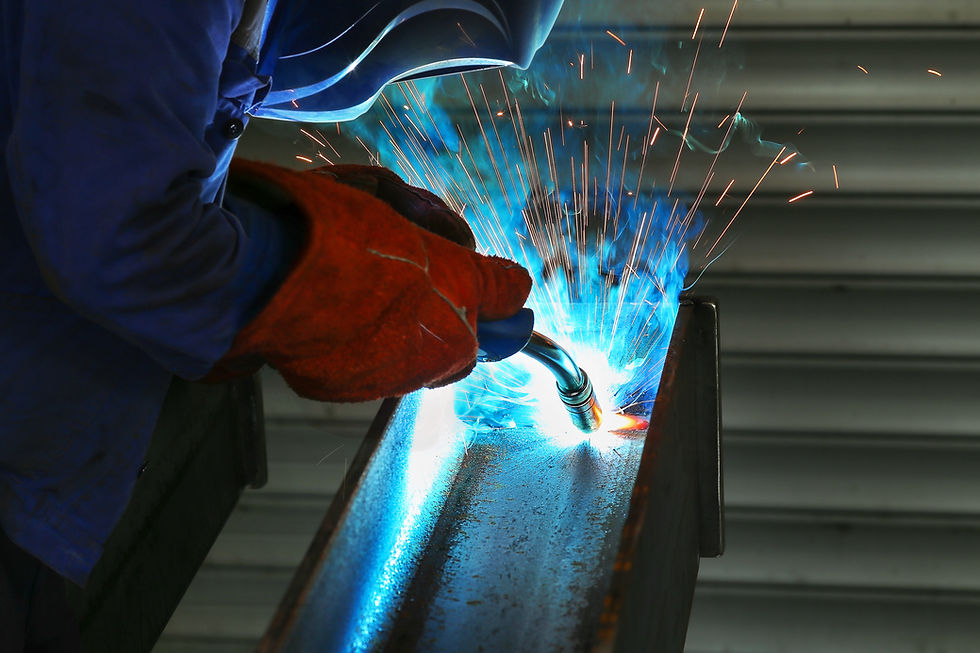
Welding isn't just about fusing two pieces of metal together—it's about creating a bond strong enough to last under stress, pressure, and time. Whether you're welding for a critical structural project or simply repairing something at home, knowing the strongest welding techniques can make all the difference. In this blog, we’ll explore the most reliable ways to weld, breaking down the benefits of different methods and how to master each one for maximum durability.
Understanding the Basics of Welding Strength - Mastering the Strongest Welding Techniques
Before diving into the top techniques, let’s get a handle on what makes a weld strong. A durable weld depends on a few key factors:
Type of Metal: Different metals require different approaches. Welding aluminum isn’t the same as welding steel, for instance.
Welding Process: The method you use—TIG, MIG, Stick, etc.—has a huge impact on strength.
Penetration: How deep the weld penetrates the material determines how strong the bond will be.
Filler Material: The type of filler you use can affect the strength and longevity of the weld.
Got it? Now, let’s move on to the specific welding techniques.
1. TIG Welding: Precision and Strength Combined
When it comes to creating strong, clean welds, TIG (Tungsten Inert Gas) welding is often considered the gold standard. Why? Because TIG welding offers precise control over heat input, ensuring deep penetration without overheating or warping the metal.
Benefits of TIG Welding:
High strength: TIG welds are incredibly strong due to the deep penetration and precise control.
Works on thin materials: Great for welding thinner metals that might otherwise burn through.
Clean, high-quality welds: TIG produces clean welds with minimal splatter, reducing the need for cleanup.
Expert Tip: Practice steady hand control. TIG welding requires a consistent hand, as you're controlling both the heat and the filler material simultaneously.

MIG weld Mastering the Strongest Welding Techniques
2. MIG Welding: Versatile and Fast
MIG (Metal Inert Gas) welding is one of the most popular techniques, thanks to its speed and versatility. MIG is often the go-to method for larger projects where efficiency is crucial, but that doesn’t mean it sacrifices strength.
Benefits of MIG Welding:
Faster welds: MIG is much faster than TIG, making it ideal for bigger jobs.
Easier for beginners: It’s easier to learn than TIG, making it a great starting point for novice welders.
Versatile: Works well on a wide range of materials, from aluminum to stainless steel.
Expert Tip: Ensure proper gas flow. Too much or too little shielding gas can affect weld quality and weaken the final result.
3. Stick Welding: Rugged and Reliable
If you’re welding outdoors or dealing with dirty, rusty metals, Stick welding (Shielded Metal Arc Welding or SMAW) is often the best choice. This method uses a consumable electrode to create an arc between the metal and the electrode itself. It’s durable and perfect for heavy-duty projects.
Benefits of Stick Welding:
Great for outdoor work: Stick welding performs well in windy conditions where gas-shielded methods might struggle.
Strong welds on thicker materials: Perfect for construction and industrial welding on thicker steel.
Works on dirty or rusty surfaces: Unlike other methods, stick welding doesn’t require pristine metal.
Expert Tip: Keep an eye on your electrode angle. Maintaining the correct angle (about 15-20 degrees) can significantly improve your weld penetration and strength.
4. Flux-Cored Arc Welding (FCAW): Heavy-Duty Welding Power
For industrial-grade welding, Flux-Cored Arc Welding (FCAW) is a beast. This method is similar to MIG welding but uses a flux core in the wire, allowing it to handle much thicker materials. FCAW is often used in shipbuilding, heavy equipment repair, and large-scale structural work.
Benefits of FCAW:
Heavy-duty applications: Ideal for thick metals and heavy structural welding.
Fast and efficient: It’s faster than traditional MIG or Stick welding for large-scale jobs.
Works well in outdoor conditions: Like Stick welding, FCAW doesn’t rely on shielding gas, so it can handle wind and other outdoor elements.
Expert Tip: Watch for slag buildup. Since FCAW produces more slag than other methods, be sure to clean up after each pass to avoid contaminating your next weld.

welding stainless steel by Tig
5. Oxy-Acetylene Welding: Old-School Strength
While not as commonly used today, Oxy-Acetylene welding still has its place, especially for those looking to weld thin metals like sheet metal or for applications requiring more flexibility. This method uses a combination of oxygen and acetylene gases to produce a flame hot enough to melt metal.
Benefits of Oxy-Acetylene Welding:
Great for brazing and cutting: In addition to welding, this method is also useful for cutting and brazing metals.
No electricity required: Perfect for situations where electricity isn’t readily available.
Expert Tip: Be cautious with heat control. Oxy-Acetylene welding can easily overheat thin metals, so practice controlling the flame to avoid damage.
Factors That Affect Weld Strength
Aside from mastering the technique, here are a few other critical factors to ensure your welds hold up under pressure:
Joint Preparation: Clean, properly aligned materials make for stronger welds. Don’t skip the prep!
Proper Heat Settings: Too much heat can weaken your weld, while too little won’t penetrate enough.
Weld Passes: Multiple passes can reinforce the strength of the weld, particularly for thicker materials.
Filler Material: Always choose the right filler rod or wire based on the metals you’re working with.
Common Welding Mistakes to Avoid
Even the most experienced welders make mistakes from time to time. Here are a few common pitfalls to watch out for:
Inadequate Penetration: If the weld doesn’t penetrate deeply enough into the base metal, it won’t hold up under stress.
Poor Joint Fit-Up: Misaligned materials create weak points, no matter how strong your weld is.
Overheating the Metal: Excessive heat can warp or even crack the metal, reducing weld strength.
Wrapping It All Up (Conclusion)
So, which welding technique should you choose for the strongest welds? Ultimately, it depends on your project, materials, and environment. TIG welding stands out for precision and strength, but MIG is perfect for faster, versatile welds, while Stick and FCAW methods shine in rugged, outdoor conditions. By mastering these techniques and avoiding common mistakes, you’ll ensure that your welds are built to last.
If you’re just starting or want to refine your skills, practicing different techniques on various metals can help you become a more well-rounded welder. Strong welds aren’t just about the method—they’re about preparation, attention to detail, and the right equipment for the job.
Happy welding!



Comments